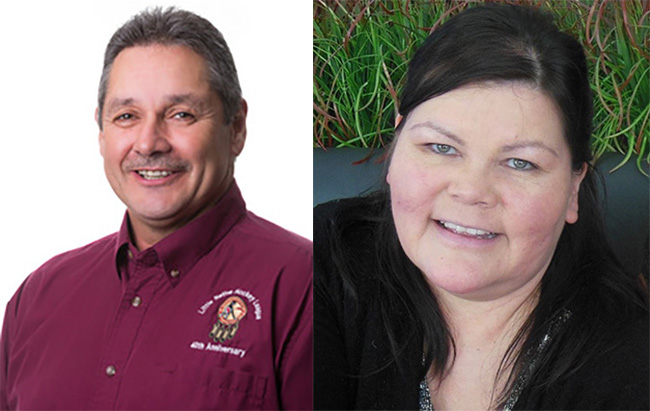Ontario to double number of entrants for National Aboriginal Hockey Championships

By Sam Laskaris
MEMBERTOU FIRST NATION – Thanks in large part to officials from one of the world’s longest running and largest Native youth tournaments, Ontario will be doubling its number of entrants for the National Aboriginal Hockey Championships (NAHC).
As has been the case in recent years, the Aboriginal Sport & Wellness Council of Ontario (ASWCO) will once again be icing both female and male teams for the 2018 national event.
Following many previous attempts in recent years, officials from the Little Native Hockey League, who annually run the highly regarded tournament best known as the Little NHL, have also been given the green light to ice female and male clubs for this year’s NAHC.
The 2018 national tournament will be staged in May and hosted by Nova Scotia’s Membertou First Nation. The Membertou First Nation, a Mi’kmaq community, is located about two kilometres from Syndey, N.S.
The NAHC, which have been held annually since 2002, features Bantam and Midget players.
Marian Jacko, a member of the Little NHL’s executive committee, dismisses any suggestions that Ontario does not have sufficient talent to form a pair of clubs in each division at the NAHC.
“There is so much talent,” she said. “It’s unbelievable.”
Jacko said Little NHL officials have been hearing for quite some time complaints about how previous Ontario teams have been chosen.
“The impetus for the Little NHL wanting to put in two teams is because we’ve been hearing from parents how unhappy they’ve been with how the selection process worked in the past and how athletes were treated in the past,” she said.
Little NHL reps have tried in the past to get permission to ice squads for the nationals. But those efforts were consistently stymied by officials from ASWCO, the governing body for Aboriginal sports in the province.
Chico Ralf, the vice-president of the Little NHL’s executive committee, said his organization was successful this time around because of the tremendous support it received from Aboriginal political leaders.
“We got strong support and total support from the Chiefs of Ontario,” Ralf said.
Ralf said Six Nations Chief Ava Hill was one of the biggest supporters of having additional Ontario squads at the NAHC.
Others who supported the move wholeheartedly were Grand Council Chief Patrick Madahbee and Regional Chief Isadore Day.
“We tried for a few years to get this to happen,” Ralf said. “Other people had tried and I had tried before.”
Ralf said he persevered because he kept hearing of the desire from families from communities across the province who were hoping to have additional opportunities to take part in the NAHC.
Getting the Chiefs of Ontario fully on their side was a huge plus.
“This never would have happened without their support,” Ralf said. “Without their support we would have been blocked again. We had several meetings with them to get this sorted out. It went back and forth and took several meetings to get it sorted out.”
This won’t be the first time Ontario will have four clubs participating at the NAHC. In the tournament’s early years both Ontario South and Ontario North teams were iced in both the female and male divisions.
There are still some questions, however, over how the rosters of the Ontario teams will be selected.
There is currently an imaginary line drawn across the province at the Wasauksing First Nation in Parry Sound dividing those who will be eligible to play for the North and South clubs.
ASWCO will be responsible for icing the Ontario North squads. And the Little NHL reps will select rosters for the Ontario South teams.
Jacko, however, said the eligibility for a number of players has arisen. Athletes are supposed to play for the area where their parent(s) reside.
But in some situations athletes live in, go to school and play hockey in an area different from the First Nation where their mother or father reside.
Jacko is pleased though more Ontario athletes will be able to suit up at the NAHC.
“We want to make sure every elite athlete who wants to be able to participate in this tournament can,” she said.
In recent years the NAHC has been featuring 16 entrants, eight in the female category and eight in the male division.
The addition of two more Ontario squads will not cause an imbalance in this year’s participants. That’s because New Brunswick, which has been competing in recent years as part of the Team Atlantic entrants, will be icing its own clubs this year.
Atlantic clubs will continue to take part.
As a result, there will now be a total of 20 teams competing at this year’s NAHC.


